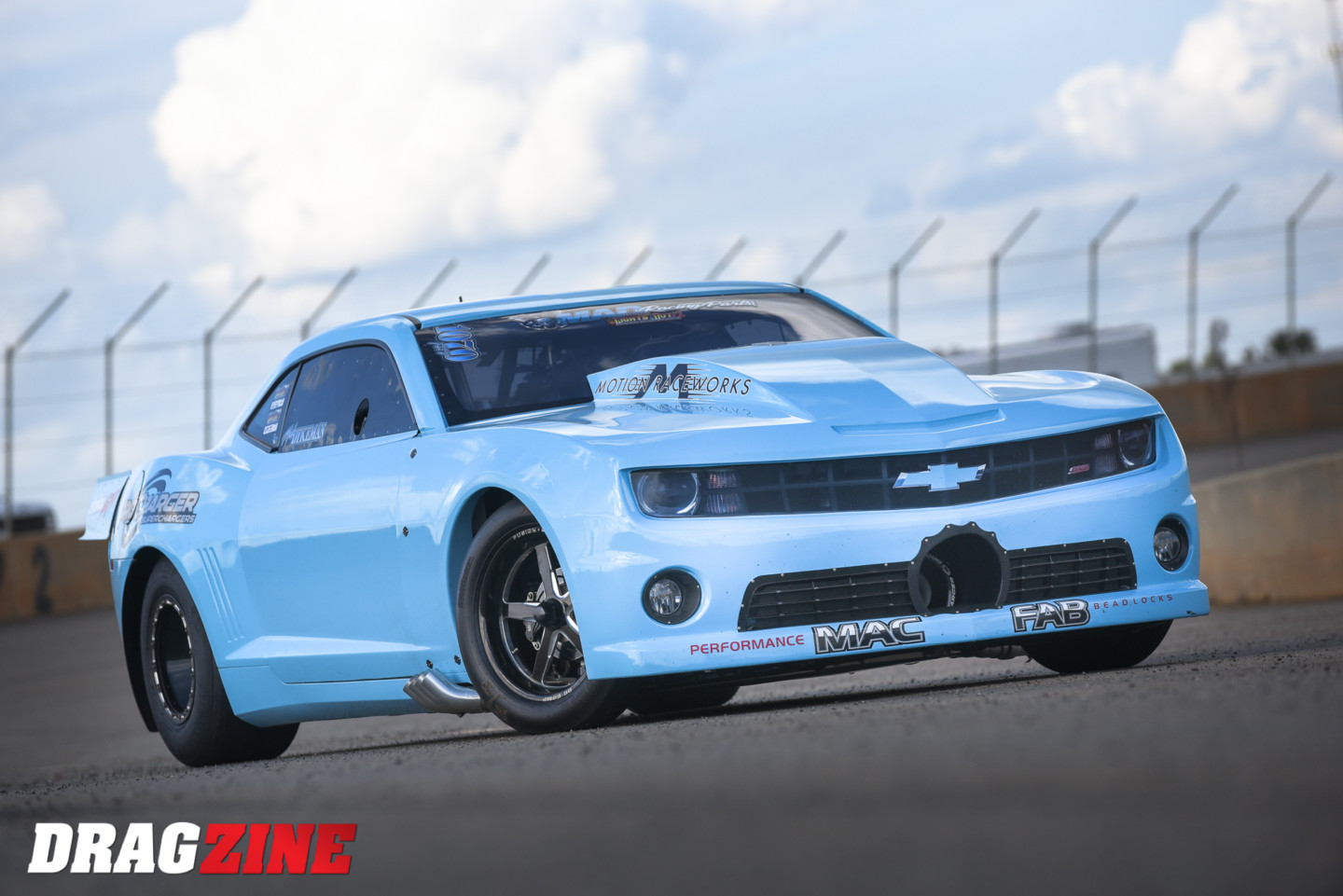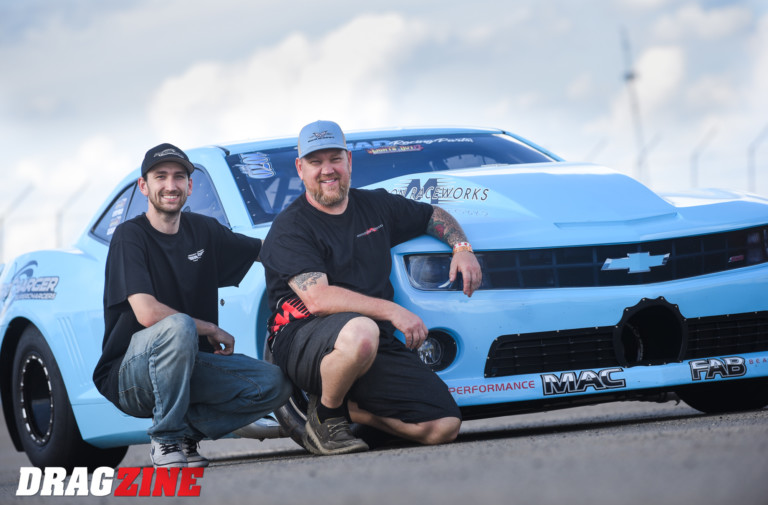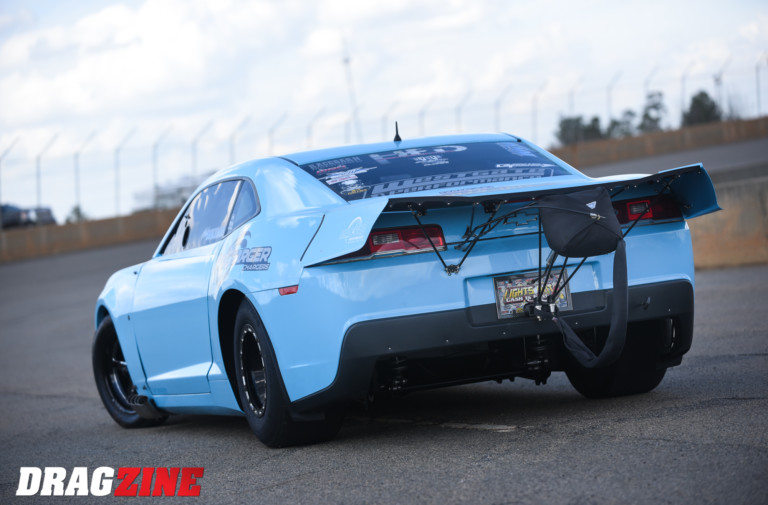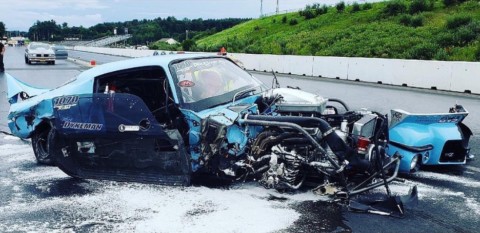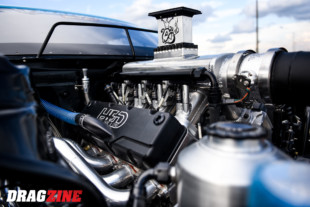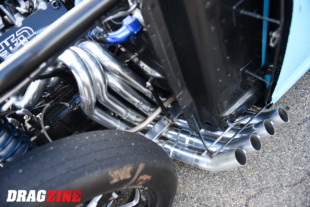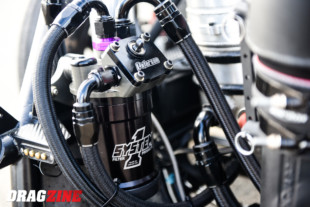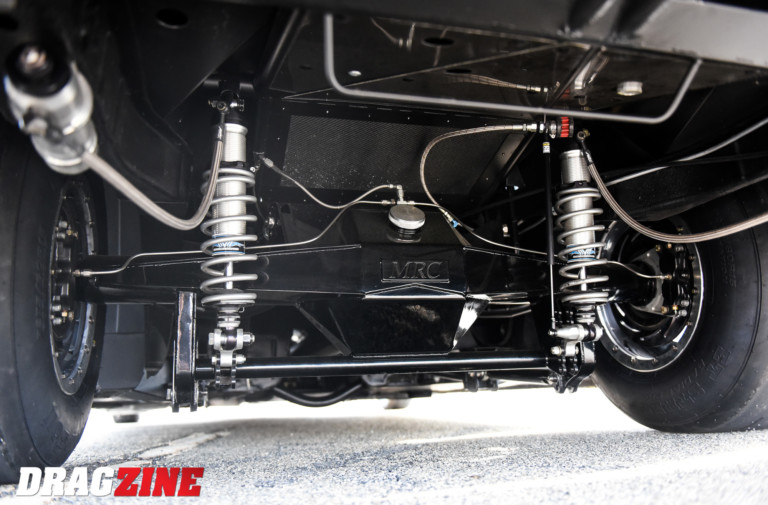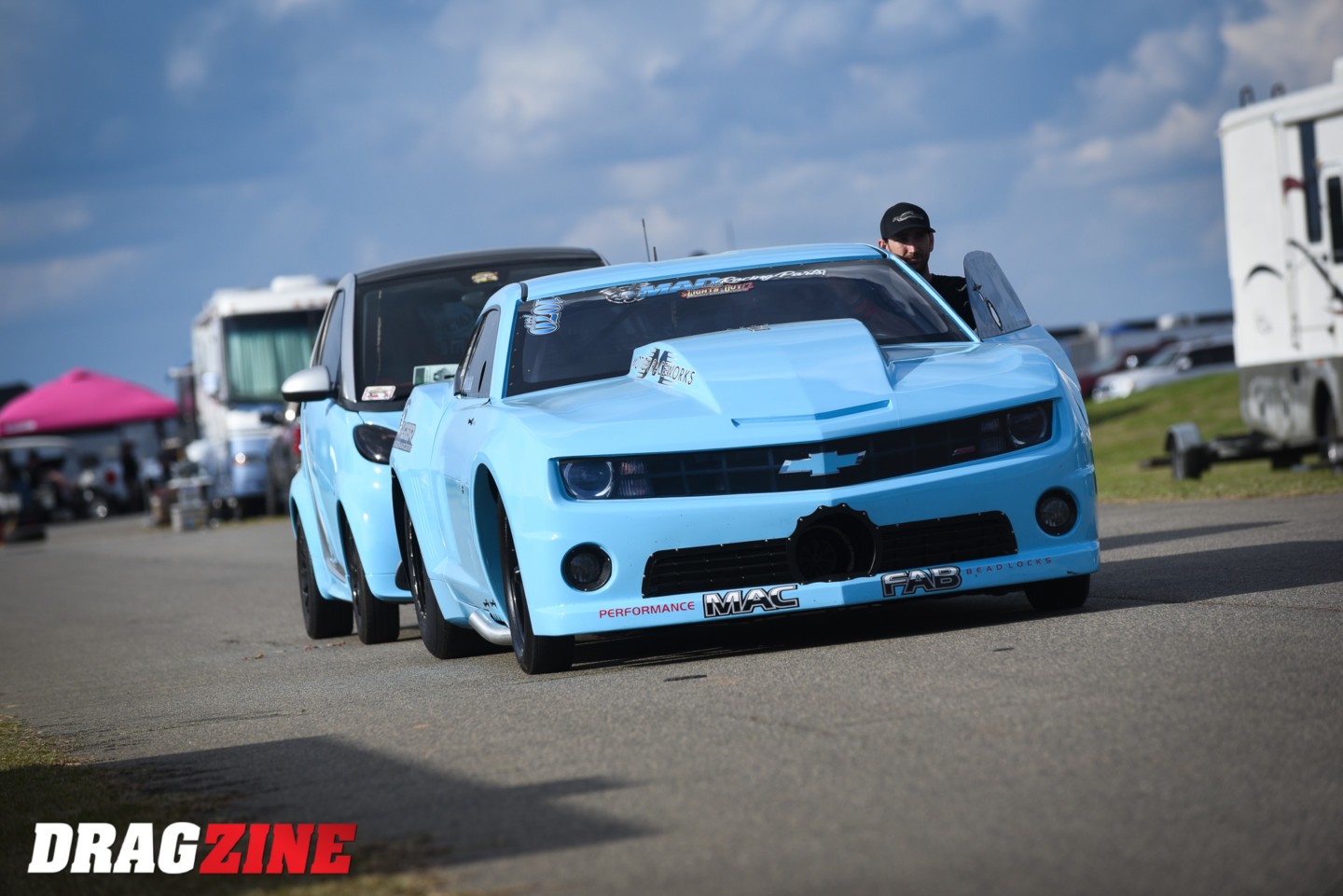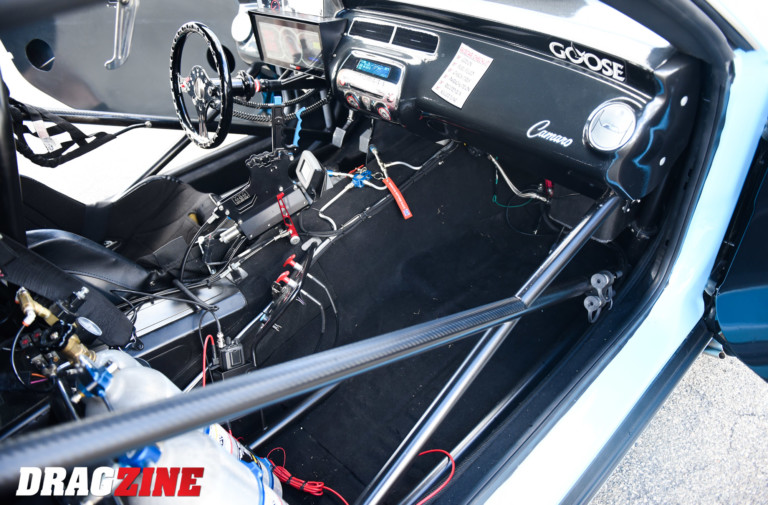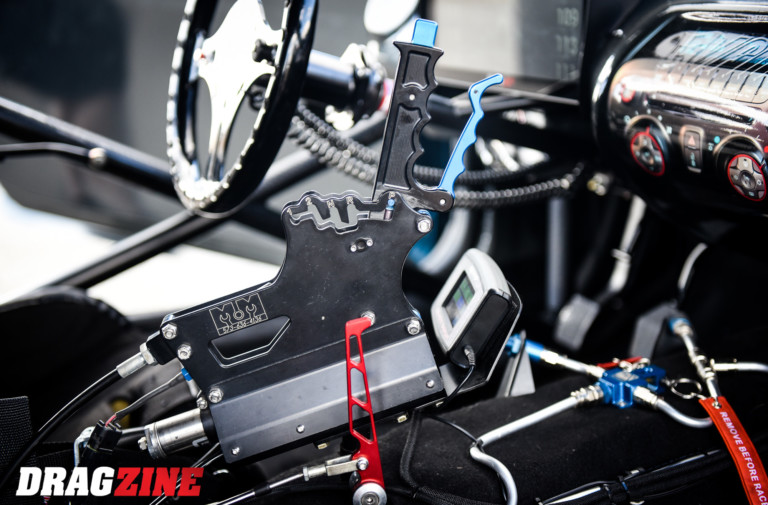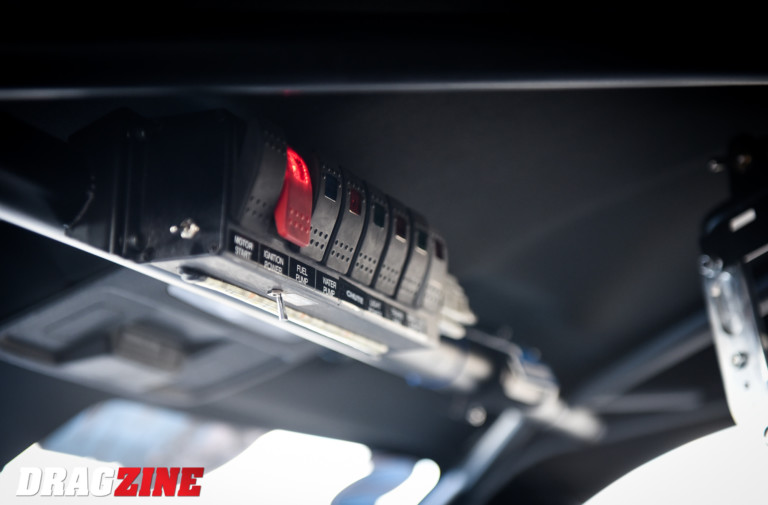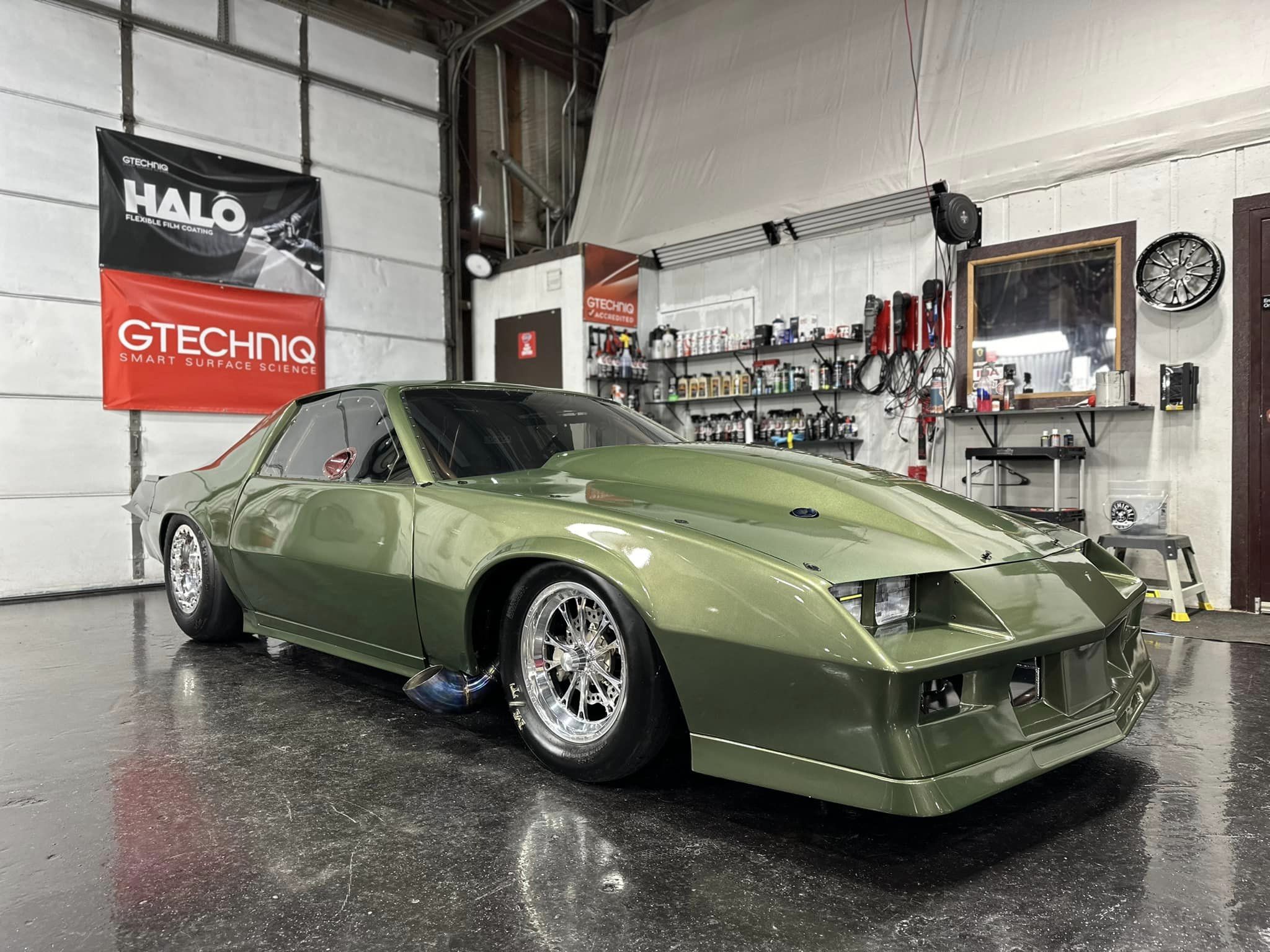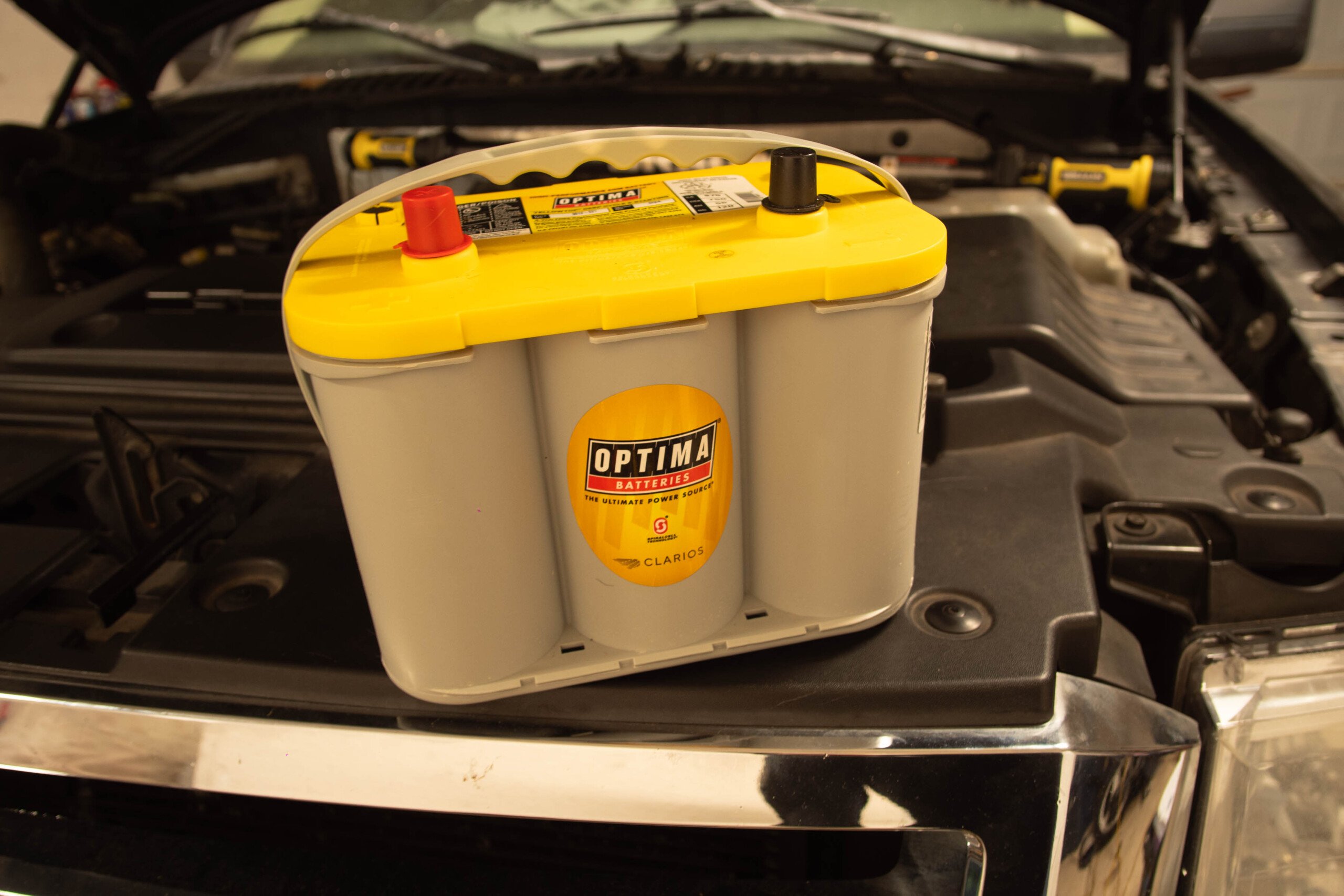Since entering the radial-tire racing arena five seasons ago, Tewksbury, Massachusetts native Mark Dykeman has been the most impossible guy to miss in the X275 staging lanes, what with his pair bright baby-blue toned Chevrolet Camaros.
Dykeman’s latest ride, a 2014 model, fifth-generation Camaro, is the evolution of the 1972 Camaro, known as the “Blue Goose,” that he first got his start with in radial racing in 2016. The ’14, powered by a 470-inch LSX paired with a ProCharger F-1X supercharger, has already dipped into the 4.20s, and Dykeman and his co-tuners, son Jack, and Pete Harrell, are confident their machine will be a competitive 4-teen car with some more laps under it.
The existence of the fifth-gen, sadly, came to be only after an unfortunate excursion into the wall with the original “Goose” that all but rendered it a parts car. Dykeman, who owns a successful industrial welding business, got his start in racing in his teens, welding up frames for pavement modified oval-track cars; after a stint racing mods himself, the cost of tires and other consumables got to be too exorbitant, and he turned his attention to drag racing.
“That was back in my high school days; I was framing houses and ended up taking a job at a machine shop and that’s how I learned to tig-weld and wire and paint and everything,” Dykeman says in his unmistakable Boston accent.
Dykeman (at right) with son Jack.
“It was the circle-track racing that got me into drag racing,” he adds. “That was a lot of money…not that drag racing isn’t, but in circle-track you’re buying new tires every week, new rims…and some idiot drives into you and you’re buying it all again. After a while I just couldn’t stand it anymore…I won a couple of races, but it was just crazy.”
Dykeman started attending New England Dragway and fell in love — he bought himself a ’79 Camaro with a big-block and began his journey. Before long he was welding a cage in the car, and in short order, he’d been approached by fellow racers and had a couple of handfuls of roll cages in cars at the track.
He was still working at the machine shop at the time, noting “I was out back welding those ISMA modified frames and started getting some side work and before you know, I was getting a lot of calls and ended up quitting and going on my own to weld. At first it was all roll cages and things like that.”
He raced in a class in the Northeast called Quick Street, using a big-block Super Modified circle-track motor and charging into the eights in the early 1990s when such e.t.’s weren’t as commonplace. His roll cage and chassis welding business ultimately flourished into a sizable welding operation, which provided Dykeman with financial resources well beyond what he was making at the machine shop; it’s growth also slowed his racing habit for a bit. But he was in the process of making his return with the Camaro with a 632-inch Sonny’s engine when the opportunity to buy the “Goose” presented itself.
In 2016, Dykeman was tagged in a social media post for the then-for-sale “Blue Goose,” owned and raced at the time by Tommy Kirk of MAC-Fab Beadlocks.
“We about had the Camaro done and I saw the ad for the Goose. I didn’t know Tommy or anything. I told him I’d buy the car, and he said, ‘there’a big race coming up, why don’t you drive down with your trailer and you can pick it up at the race?’ It was called Lights Out 7…that was the first time I ever went down to Georgia. He ended up having me bring my fire suit down and I reluctantly took everything and raced the car. I was hooked then and there.”
Dykeman and Kirk became best of friends in the process, and the rest is history. “He’s pretty much family now…he was in my wedding and everything,” Dykeman says.
Kirk and various other drivers, including Lyle Barnett, had been racing the “Goose” in the now-defunct Leaf Spring category, but as the class went away, Dykeman transitioned to X275.
Dykeman gradually updated the Camaro each season, and by the time of the incident, it was virtually a brand new car under the OEM steel, progressing all the way to the 4.40s from its 4.8-second performances in the Leaf Spring class. That fateful day at New England Dragway in 2018, however, was its final outing.
I loved the Blue Goose, just because it’s a ’72, it’s an older model. And it’s what got me started going this crazy, honestly. But this new car is obviously is a lot better…it’s wider, longer, got a longer wheelbase, and it’s just a better racecar.
Around the same timeframe, Dennis MacPherson at DMC Racing was working on a COPO Camaro clone for a new customer, who decided for financial reasons to pull the plug on the project long before it was completed.
“Dennis reached out to me after I crashed and told me I should call this guy and try to get this car off of him, that he’d love to see me have it,” Dykeman says.
Dykeman already had a real-deal, second-hand COPO he had purchased in the garage, but liked what he saw in the DMC chassis. He and the owner were initially unable to agree on terms, but later swapped the COPO for the DMC chassis and cash and the deal was done. In short order the new Camaro was in his shop being chiseled into the beauty you see in front of you.
Dykeman did all of the finishing work in his shop, taking it from an unrolling chassis with little more than doors and a body to a running X275 machine. In all, Dykeman was on the sidelines for nearly a year from the time of the crash to debuting the ’14, which at the time was charcoal in color. It was then raced in 2019 and most of 2020 before the LS engine was transplanted in and the baby blue scheme resurrected.
“I loved the Blue Goose, just because it’s a ’72, it’s an older model,” he says, in comparing and contrasting the two cars. “And it’s what got me started going this crazy, honestly. But this new car is obviously is a lot better…it’s wider, longer, got a longer wheelbase, and it’s just a better racecar. Plus, it’s professionally built. The Goose was built by Tommy, and it would have needed to be updated to be competitive. It had been crashed a couple times and had some mileage on it, so it was probably time for a new chassis.”
The foundation for the 470-inch LSX mill is a Dart billet LS block, featuring a Bryant crankshaft, Wiseco pistons, and R&R connecting rods, topped with Mast Mozez cylinder heads with Jesel shaft rockers and a custom HED 55mm roller camshaft, all assembled by Harrell at HED. A Mast intake was also transplanted onto the engine after these photos were taken. The aforementioned ProCharger F-1X-106 provides the boost, in tandem with ProCharger Race Valve blow-off valves. Billet Atomizer 850PPH injectors provide the fuel to the cylinders, an MSD Pro 600 CDI handles the ignition duties, and a Holley Dominator EFI system serves as the brains of the whole deal. Dykeman also relies on a Moroso four-stage billet oil pump in a dry sump configuration to keep the potent mill adequately lubricated.
An M&M two-speed Turbo 400 transmission with a 1.58 ratio and a M&M bolt-together converter deliver the power via a PST carbon-fiber driveshaft to a Tim McAmis Race Cars full floater rearend housing, with a Strange Engineering Ultra Case center section. Strange axles and brakes at all four corners bring the Camaro to a stop at the close of its 4.2-second laps to the 1/8-mile.
The 25.3-spec chassis features a Racecraft subframe and Santhuff coilover shocks up front, and a custom DMC rear setup with Menscer Motorsports canister shocks. Dykeman rides on RC Components wheels, including Alpha 15×12 beadlock wheels in the rear, wrapped in Mickey Thompson 275 Pro Drag Radials.
Inside, you’ll find a mixture of carpet and carbon-fiber interior, with a Kirkey racing seat; in addition to the Holley Dominator system, Dykeman’s combo relies on a Davis traction control system. A 12-inch Holley dash allows him to to monitor engine’s vitals. A FireAde 2000 system also ensures his safety in the event of fire.
Continuing the tradition of the original ‘Goose,” Dykeman has a second ’72 Camaro that he and Jack are building, utilizing some of the undamaged components to assemble it. His old ’79 Camaro is also being rebuilt into an Ultra Street class car for Jack to drive, so there are plenty of irons in the fire.
In addition to his family, including Jack, with whom Mark says he “couldn’t do it without,” Dykeman was quick to thank his many supporters for backing his numerous projects and racing endeavours, including Tommy Kirk at Mac-Fab Beadlocks, Motion Raceworks, Serg Shifman at ProCharger, Pete Harrell, Glenn Payne at MAD Racing Parts, Jeff Brandenburg of Dykes and Strippers Custom Wiring, and Menscer Motorsports.

